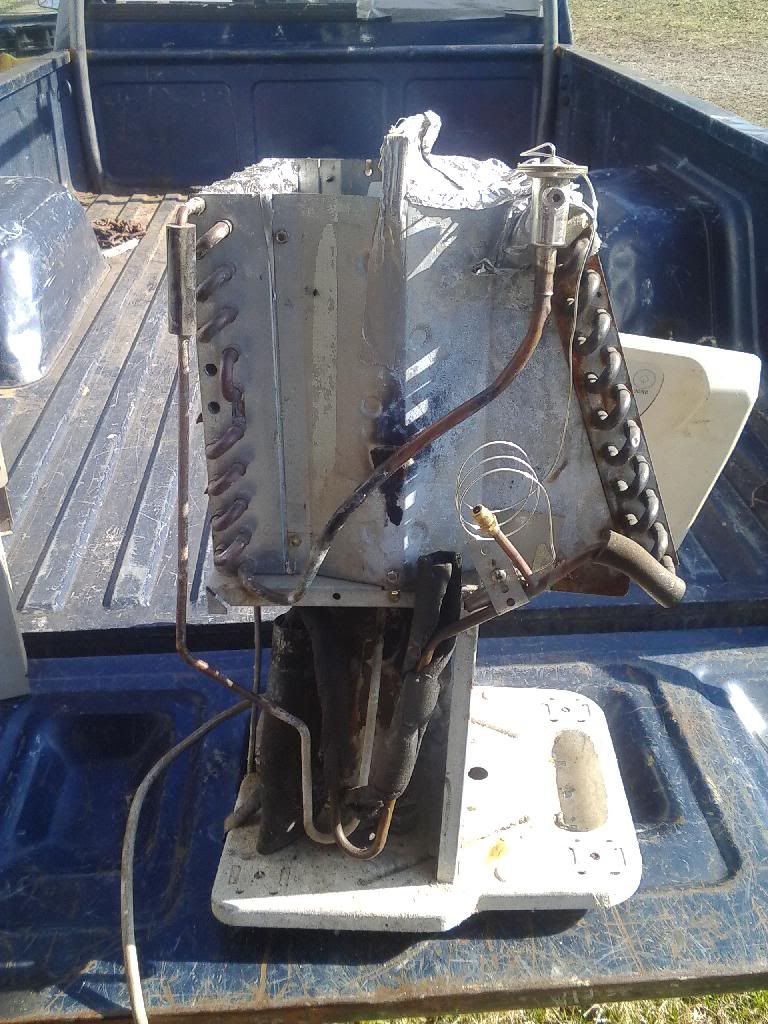I have a dehumidifier I rigged up to heat with:

It is a whirlpool gold or pro or primo model. Has the same compressor as many of the 5000 btu air conditioners. This thing will straight up own a 1500 watt space heater after about 2 minutes. It consumes very close to 500 watts (plus whatever fan power to move air).
Initially, it had a capillary tube for a metering device. By design, the cap tubes in these units are too long for the airflow through the unit. The refrigerant quickly gets compressed (liquefied) and remains mostly in the condenser heat exchanger. Due to the long cap tube, the evaporator quickly starves, and the liquid refrigerant that makes it through the cap tube equalizes to a very low temperature and pressure. Unless you force feed the evaporator a stream of water or lots of air, it will eventually freeze into a block of ice.
What I ended up doing to make this unit a beast is simple: I swapped the cap tube for a TXV. I found a danfoss 1/2 ton valve on ebay for under $10 shipped to my door. A TXV basically matches the refrigerant flow so the evaporator is transferring the most heat it can the whole time the unit runs. This is like installing a turbocharger on a naturally aspirated car. The warmer the evaporator gets, the more the TXV tries to cool it down. When it's cold, the txv makes it a little colder. This unit sucks out much more water from the air now than it ever did with a cap tube.
I tinkered and experimented a lot on this unit. It survived the abuse and torture testing I threw at it and still functions today. The best performance I got out of it as a heater or a/c unit was running it like a packaged portable unit. The coil of utility recycled space air, while the other coil sucked space air and exhausted its waste heat or cold outside. The condensate was reused to water houseplants.
After installing the TXV, the evaporator was no longer constantly starving. More importantly, the evaporator doesn't freeze up now. The TXV regulates the refrigerant flow so that the evaporator coil reaches the dewpoint of the incoming air quickly, then just yanks moisture out of the air like crazy. It doesn't just drip little drops of water any more: if set outside on a muggy day, it can collect close to two gallons an hour!
The only time the evap coil ever froze on this unit was when I was running it as a portable heat pump in the winter. I had split the airflow so each side got its own air supply. The condenser sucked in room air and exhausted to the room. The evaporator got attic air, and exhausted into the attic. When the attic approached freezing temps, the evap coil froze if the dewpoint was high enough. If it was a dry night, the coil might not freeze at all. When the unit wasn't running, any frost that formed on the coil would thaw from indirect exposure to the heat from the room the unit was in.
On cold, snowy nights, the unit would run until the evap coil was frozen solid, and could not breathe. I moved the frost sensor to a point low on the coil, from about halfway up, so the unit would not short cycle. Even then, the coil wouldn't completely thaw before the unit thought it was warm enough to restart. Most of those frigid mornings, I would wake to find the thing in shutdown (frost) mode, due to a frozen evaporator. All I could do was unplug it for awhile.
I eventually rigged it so the evap would suck room air and exhaust chilled air into the attic so the coil wouldn't freeze. It performed so well that I was encouraged to build larger, more powerful units that would help heat the rest of the house for pennies on the dollar.